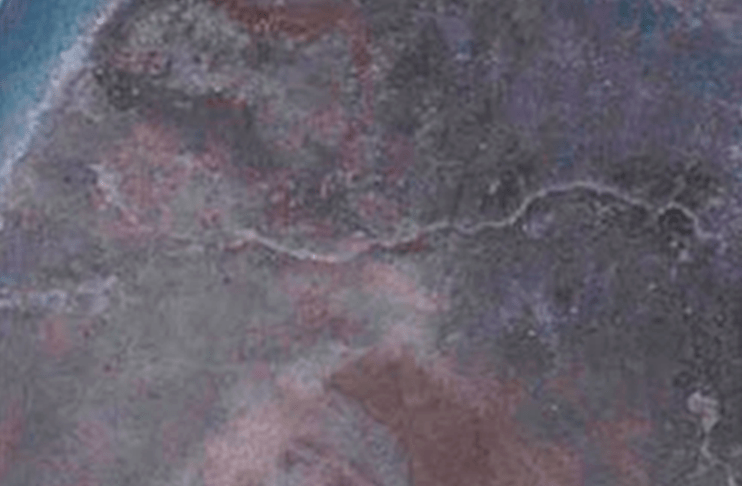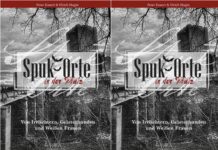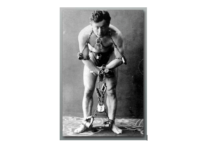IMAGES OF THE DEAD? PERMANENT PARANORMAL OBJECTS AND THE ‘FACES OF BELMEZ’, SPAIN
The January 2017 edition of the Spanish magazine Ano Cero (No.318) carries an examination by Isabela Herranz of the historic Battersea Poltergeist case that occurred in Battersea, South London 60 years ago. This case had been virtually forgotten until the book The Poltergeist Prince (2013) authored by researcher James Clarke, and co-written with Shirley Hitchings who, as a teenager aged 15, was at the centre of the poltergeist outbreak in 1956. As Isabela Herranz describes, the most extraordinary feature of the case was the production of numerous apparently hand-written letters attributed to the poltergeist. The alleged entity was given the nickname ‘Donald’ but claimed in its communications to be the spirit of Prince Louis, younger son of King Louis XVI of France, born in 1789 and believed to have perished during the French Revolution after the guillotining of his royal parents. See:
http://www.xn--revistaaocero-pkb.com/secciones/parapsicologia/cartas-espiritus
Permanent Paranormal Objects?
If genuine, specimens of these letters might be candidates qualifying as ‘Permanent Paranormal Objects”(PPOs) a term coined by the psychologist, philosopher and psychical researcher John Beloff (1920-2006). Beloff postulated a Permanent Paranormal Object being an enduring material object with measurable characteristics which could be recorded, open to inspection at any time and inexplicable other than by the operation of paranormal forces.
In practice, obtaining a physical object meeting these criteria is fraught with difficulties. Any forensic sample is potentially open to challenge, and has to be assessed with reference to a wide range of surrounding factors and other evidence. PPOs are precluded with the majority of paranormal phenomena which occur on a purely mental level, as part of the subjective experience of human beings. With physical phenomena, any potential PPO may be open to alternative explanations, ranging from the operation of natural or recognised forces to deliberate fraud. The circumstances prevailing when the object was obtained also have to be subjected to scrutiny and open to verification.
The ‘Faces of Belmez’
Such difficulties are illustrated by the strange case of the ‘Faces of Belmez’ which began in 1971 when the floor of a farm house in in the small Spanish town of Belmez de la Moraleda in Jaen, Andalucia, became a gallery of strange spontaneous images resembling human faces. The first was seen on the kitchen floor by the owner Maria de Pereira (also known as Maria Gomez) and began to fade with time.

Details of one the Belmez faces reported changing over time
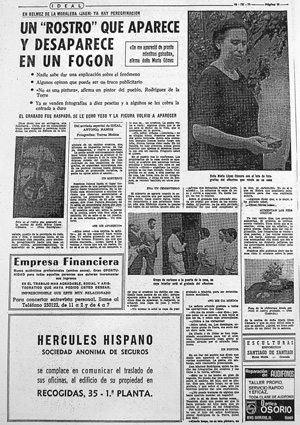
After this first face was destroyed by her son, and the cavity was filled up and plastered with cement, a new face was seen to form on the floor at the same spot. But this time, instead of fading, the features became clearer and more pronounced.
The phenomenon soon became a national wonder with people thronging to Belmez from all parts of the country in the belief there had been a miracle. Others considered it was a cynical attempt by the family to raise money.
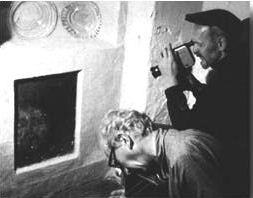
Investigators coming to site had part of the floor showing a face cut out and covered by glass. Digging into the ground below human bones were found – in keeping with the tradition that skeletons lead to haunting phenomena (see ‘Skeletons Benath The Floor’ http://europaranormal.com/ghosts/skeletons-beneath-the-floor/). Soon after more specimens appeared on the floor surface, including 18 tiny faces surrounding one of a larger image of a woman with a horrified expression.
Parapsychologists from Spain and Germany went to Belmez and were impressed. On May 10, 1972, Professor G. Argumosa from Spain covered up part of the kitchen-floor with a transparent plastic material, fixed down by strips of gummed tape fastened to the wall. Within a few hours a woman’s face developed under the plastic covering. This was witnessed by several people who signed a report. Professor Hans Bender from Germany (best known for investigating the Rosenheim Poltergeist of 1967) also investigated. Bender sealed down a sheet of glass over one of the face, and even under the glass the face changed its appearance.
On 9 April 1974 it was reported that a face formed itself on the kitchen-floor within 10 minutes in front of observers, the Spanish Prof. G. Argumosa and two editors of a well-known periodical. It disappeared later in the same day, to be replaced by the face of a pretty woman which, in turn, was transformed into the image of another woman with rough features. Later in 1974 faces were still appearing but remained very vague. It looked as if the lines giving the faces their contours were scratched in the floor and filled in with what seemed to be colouring matter. A chemical analysis however showed only cement, ash and quantities of kitchen products; no colouring matter was found.

The paranormal interpretation was contested by a Spanish psychologist J. L. Jordan who headed a commission reporting that the image of a face showed traces of pigments of a greyish substance. ‘Regarding another face, we are told that it was determined that it was done with a fine paint-brush and a mixture of soot and vinegar. [They] could even determine the size of the brush hairs. . .used to paint the face’ (Jordan, 1982)
However, on one occasion in 1975 cement blocks bearing a face dubbed ‘La Pelona’ (which can mean ‘bald’ or ‘death’) were removed for analysis. Chemical tests were performed by researchers from Hydrological and Mineralogical Institute of Valencia, Spain. Analysis of ‘the drawing of the face and features discovered it was composed of a melanocratic substance’ predominantly dark mineral constituents of igneous rocks. There were no traces of silver nitrate or other compounds that might have been used to manufacture such faces. New flooring put in by the family continued to show the images.
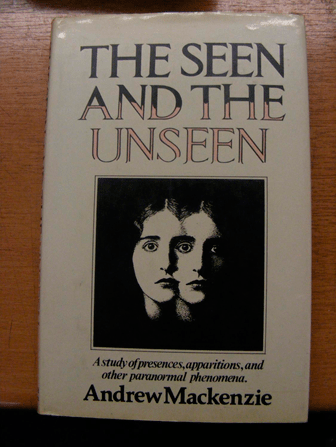
Being focused on a specific location, the phenomenon had the characteristics of both a haunting and also of a poltergeist-like physical phenomenon.
The British researcher Andrew Mackenzie, an authority on apparitions, visited Belmez in 1983 and was impressed, rejecting the fraud hypothesis proposed by Jordan. Mackenzie stated in his book Seen and Unseen (1987) “Ί consider the case of the House of the Faces to have been the most remarkable that has come my way in twenty-five years of investigations into spontaneous manifestations of the paranormal’. Mackenzie also stated:
Some people, unable to accept the phenomena, will opt for fraud—and there have been many accusations of this—but, if so, how was the fraud carried out? If it involves painting, is there a member of the household, or a friend of the family, with the necessary artistic gifts for carrying out the fraud? (Mackenzie, 1995).

Although some faces faded away, others persisted and fresh ones emerged through the 1980s and were still appearing in the late summer of 1989. Claims and counterclaims about Belmez continue into the 21st century.
Parapsychologists speculated that the farmer’s wife who then was undergoing the menopause and showed symptoms of a neurotic disposition accompanied by states of depression, acted as a poltergeist-medium. ‘Maria’s [the owner of the house] sensations are transmitted onto the cement with the ease of a photographer capturing an image’ was the view of A. Cardenas (cited in Alvarado, 1985). The changes in the images were presumed to be a projection in changes of her mental state.
Sceptics proposed that there were ways in which chemical treatment of the floor could have resulted in the images; but with expert opinion divided it would appear that, if fraud occurred, members of the household would have had to possess a sophisticated knowledge of chemical techniques as well as a measure of artistic ability in applying them. Regrettably in cases such as this, with parapsychology remaining an under-resourced discipline there were no dedicated psi laboratories to which samples could have been taken. Forensic analysis was dependent upon the limited interest and resources of other scientific disciplines with established departments of their own. The Spanish language entry on the faces of Belmez on Wikipedia in translation gives a more balanced view than its English-language equivalent entry on the controversy. https://es.wikipedia.org/wiki/Caras_de_Bélmez .
However, both accounts suffer from the selective reporting of the views and position taken in a 1993 article carried by the Journal of Society for Psychical Research. Written by Cesar Tort and Luis Ruis-Noguez of Mexico it proposed the use of oxidising agents as a hypothesis, and not as proof of causation as a cursory reading of the Wikipedia entries might suggest. In fact, their article was a plea for further research in the context of the wider discussion of Permanent Paranormal Objects. The authors stated of their views:
These are put forward in the previous pages and refer only to those samples which were brought to us. We decline to state opinions or enter into discussion regarding other ‘faces’ which we have seen only in photographs for sale and whose composition, process of formation, etc., we have not analysed. Even with respect to those analysed, we do not conjecture whether they were fabricated or produced by chance distribution of natural components (present in the area) mixed with cement, for this is outside of our analytical realm. (Journal of the SPR vol 58 July 1993)
In 2004 it was reported that Maria had died and the house was being put up for sale amid reports and claims that an apparition of an old woman was being seen in the house and that new faces were appearing. (The Times 23 October 2004) This confounded predictions that the faces would vanish on the death of Maria (cited in Mackenzie, 1987, p.30) In 2007 a book appeared Los Caras del Belmez by Fransico Manez by accusing Maria’s son of perpetrating the fraud. However, over the last decade it has continued to be a site of interest and the faces are reported as preserved, recognised as a tourist attraction.
Parallels are to be found in psychical, mystical and Fortean literature. The Catholic Church has a long and ancient tradition of paintings done without human hands (acheiropoieta ’made without hands’ in Greek), of which there is a supposed example at the Sancta Sanctorum in the Lateran at Rome known as the ‘Veil of Manopello’

Image on the Veil of Manopello, in the Lateran Church, Rome
In Latin America reports occur periodically of spontaneous images of the Virgin Mary appearing on such mundane locations as the walls of water butts and garden fences. Fortean Times magazine in the January 2017 (edition FT 348 published on 15 December 2016) carries an article ‘The Face At The Window’ on ‘window ghosts’ alleged images of human faces or features appearing in domestic glass windows, by Chris Woodyard.
In the UK, Andrew Green (1927-2004) in Ghost Hunting – A Practical Guide (1973/2016) referred to an example at Caterham in Surrey. A particular window set at an angle beside a fireplace in a 17th century house had peculiar marks resembling a hand‐print in the centre of the pane. The legend connected with this peculiarity was that an old woman looking through the window one day had seen her son attacked and murdered, and to steady herself from the shock of this tragic experience had put her hand on the glass, creating an indelible mark on the pane. Exactly how this was created is a mystery, but at least two witnesses stated that they had seen the marks on the glass, and that they were perfect reproductions of a smallish palm print. However, years later when Green enquired about the possibility of photographing the window, Green was assured that the print had “mysteriously faded away”. He considered it a good example of a story being created to account for a physical phenomenon, considering that when the glass was originally made and still pliable some youngster had accidentally put his hand on it and got badly burnt, unconsciously creating the basis for an attractively romantic myth (‘although in all fairness there is in this case a thin possibility of the murder story being true’).
Interestingly, there is also an account from 1956 of the Battersea Poltergeist of a photograph of a film actor hung in the house which underwent observable physical changes described as ‘weeping’. Research into this element of the Battersea poltergeist case is on-going.
SOURCES:
Alvarado, C. S. (1983) Paranormal faces: the Belmez case. Theta 11(2), 38-42.
Alvarado, C. S. (1985) Poltergeist phenomena in the non-English-language literature: a
review of two books. Journal of Parapsychology 49(4), 371-377
Bender H (1976) Gesichter von Belmez (The Faces of Belmez) in Schweizerisches
Bulletin fur Parapsychologie 11. No. 2, November 1976, pp. 5-8.
Cabarrocas, G. (1976) In Karma (39) February cited Alvarado, 1985, p.372 Cardenas, A. (1990) In Ideal Revista,
July 15th.
Green, Andrew (1973/2016) Ghost Hunting – A Practical Guide edited by Alan Murdie
Jordan, J.L. (1982) Casas Encantadas, Poltergeists.
Mackenzie, Andrew (1987) The Seen and Unseen. London. Weidenfeld & Nicolson
Mackenzie, Andrew (1995) Correspondence, Journal of the SPR vol 60, July 1995
Tort, Cesar J. (1991) Will Permanent Paranormal Objects Vindicate Parapsychology ? in
Journal of the SPR Vol 58 No.824.
Tort, Cesar and Ruiz-Nouez, J (1993) Are the Faces of Belmez Permanent Paranormal

